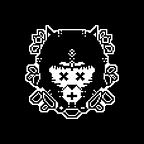P6: Creating a Gritty Office Den
Adding light probes and post-processing!
Objective
Add light probes to properly maintain lighting for dynamic objects. Also, Add post-processing effects to spice up the visuals.
Plan
Add light probes to have full coverage around the scene and properly maintain lighting for dynamic objects. Once done, I’ll add volume overrides for bloom, color correction, ambient occlusion, and vignette for post-processing effects.
Light Probes
The layout of the scene is small and simple.
The plan is to cover this whole area in the red box. The reason why I would want to add light probes is that I have baked lighting in my scene and they do not light dynamic objects.
The images and gifs above are great examples. The light in front of the character is baked and it is not casting light on the character. Light probes will help light dynamic objects.
The lights that it’s receiving at the moment are in real-time mode, not baked. Realtime lights are more expensive which is why it’s a good idea to mix light modes for best results, performance-wise.
I added a light probe group to the scene. What I want to do is have a top view in the scene view to start selecting spheres from the probe, duplicate them, and position them until I have full coverage.
Working from the top view to duplicate the spheres by hitting CTRL-D is efficient and fast! After finishing, I generated my lighting to update the scene with the light probe group. My scene now looks like this:
All Dynamic objects will now be properly lit by baked lighting.
Post-Processing
Adding visual effects to the screen will enhance the look and feel of the scene. These effects are called volume overrides for the volume framework featured in the HDRP pipeline.
Bloom
Bloom creates the illusion of bright light. It will give my materials with emissions that effect.
Ambient Occlusion
Ambient Occlusion is a real-time effect that approximates ambient occlusion in the camera view. It gives a fake shadow area on the edges of things. The gifs below show me turning on and off Ambient Occlusion.
Color Adjustment
I adjusted the overall color to a subtle blueish tint. It had a yellowish tint. I also added a bit of contrast and exposure. The gifs below show me turning on and off Color Adjustment.
Vignetting
Why not darken the edges of the screen? It could be used to emphasize attention to the middle of the screen. I like to have things subtle and not too intense.
Others
I also experimented with other volume overrides. I added tone mapping, film grain, motion blur, exposure, and more.
Showcase
Conclusion
Dynamic objects will be decently lit, which is a plus! I won’t have to worry about it anymore. Also, the effects did make the visuals look nice. There were performance issues, which I had to tweak around with the quality settings and materials. Glad I was able to enhance the fps count by about 15 more frames!
My next post will be the final part of the series. It will be about adding the final touches to the scene with more game objects, decals, dust particles, and occlusion culling.
Gabriel
